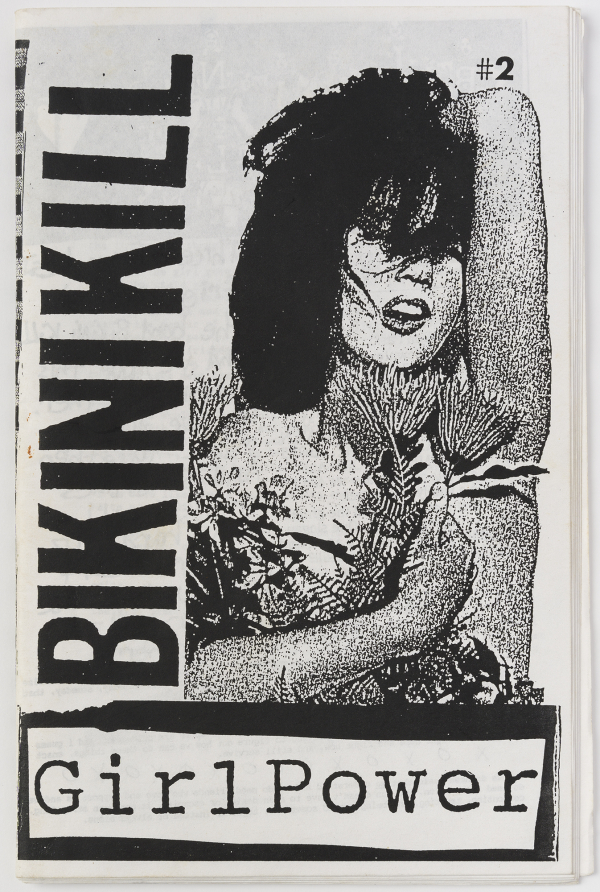Photo by Bud Lee of artists A.A. Bronson, John Jack Baylin, John Dowd, Felix Partz and Zeke Smolinsky during Decca-Dance.
Photo: Bud Lee Picture Maker, courtesy of Brooklyn Museum
Nowadays, people who have a burning desire to express their opinions or to present their artistic creations but who have no other outlet turn to the internet and social media.
But back in the 1970s, ’80s and ’90s, anyone who had access to a copy machine could put out “zines,” short for “fanzines.” There were innumerable types of zines — science fiction zines, feminist zines, political zines, rock music zines, zines featuring personal journals, art zines, horror zines, even zines designed for workers at a particular company. Those who put out the zines were usually fairly young and, to one degree or another, anti-establishment.

Photo: David Vu, courtesy of Brooklyn Museum
Most zines had circulations of less than 1,000. With the rise of the internet, many zines were transformed into internet zines, also known as e-zines. Still, some paper zines are still around to this day.
Now, starting on Nov.17, 2023, the Brooklyn Museum is presenting “Copy Machine Manifestos: Artists Who Make Zines,” the first exhibit dedicated to a particular type of zine — zines created by artists. The artists’ zines spotlighted here span five decades.
According to the museum, “Artists have harnessed the medium’s essential role in communication and community building and used it to transform material and conceptual approaches to art making across all media. This canon-expanding exhibition documents zines’ relationship to various subcultures and avant-garde practices, from punk and street culture to conceptual, queer and feminist art.”
The new exhibit also examines zines’ intersections with other mediums, such as collage, craft, film, drawing, painting, performance, photography, sculpture and video. All in all, it features nearly 1,000 zines and artworks by nearly 100 artists representing communities all across North America.
The exhibition is accompanied by the first comprehensive publication to explore artists’ zines, co-published with Phaidon Press. The book, also called “Copy Machine Manifestos: Artists Who Make Zines,” includes 800 images of zines and works in other media alongside texts by the curators and specially commissioned essays by Gwen Allen, Julia Bryan-Wilson, Tavia Nyong’o, Alexis Salas and Mimi Thi Nguyen, as well as a section featuring biographies of all the artists represented in the project.
“Copy Machine Manifestos: Artists Who Make Zines” is organized by Branden W. Joseph; Frank Gallipoli, professor of modern and contemporary art, Columbia University, and Drew Sawyer, curator of photography at the Whitney Museum of American Art (formerly with the Brooklyn Museum); with Marcelo Gabriel Yáñez, research assistant, and Imani Williford, curatorial assistant for photography, fashion and material culture at the museum.
Leadership support for this exhibition is provided by the Andy Warhol Foundation for the Visual Arts, as well as Shelley Fox Aarons and Philip E. Aarons and the Phillip Leonian and Edith Rosenbaum Leonian Charitable Trust.
Major support for this exhibition is provided by the Brooklyn Museum’s Contemporary Art Committee and the Rockefeller Brothers Fund.
The exhibition contains graphic content and language, and viewer discretion is advised.

Photo: David Vu courtesy of Brooklyn Museum






